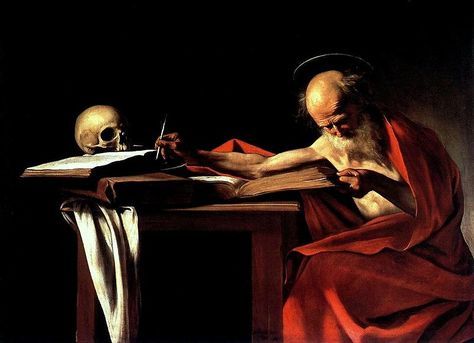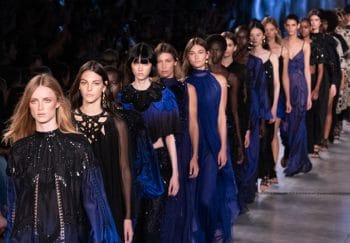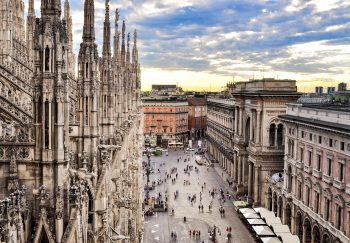Caravaggio, an Italian painter from the 17th century, was not only a murderer and scum but also a criminal and a scofflaw. His paintings, which changed the course of Italian art history, tell incredible stories and reveal the pain that he went through.
Here are some of our favorite Caravaggio paintings from Italy. We’ve arranged our list according to the date he did them… and any possible motivations.
Caravaggio was born in 1571. He grew up in Caravaggio in Italy, just outside Milan. It’s not an accident: Although his real name was Michelangelo Merisi he chose to go by the name of his hometown partly to distinguish himself from the other Michelangelo. This is not uncommon, however: Pietro Berrettini, a Cortona-born artist, was actually named Pietro da Cortona.
Caravaggio was a troublemaker from a young age. Caravaggio was a troublemaker from a young age. He fled Milan at 21 years of age, having been involved in numerous brawls and even being wounded by a police officer. He eventually settled in Rome and got a job as a painter at Giuseppe Cesari’s workshop (also known as the Cavalier d’Arpino). His main focus was on adding flowers to the paintings of the pope’s favorite artist.
Caravaggio also painted his own works. Even though Caravaggio was only in his 20s, the ways that Caravaggio would alter art history were already clear.
Take his self-portrait, the “Sick Bacchus,” located at Rome’s Borghese Gallery. left. It was painted a few years after Caravaggio arrived in Rome. It shows his skills from d’Arpino’s workshops, especially with the attention to detail, and the near-photographic realism that the leaves and fruit display. He also painted “Boy With a Basket of Fruit,”at the top–also in Rome’s Borghese Gallery, which is even more impressive in its depiction of foliage and fruit.
The “Sick Bacchus”, however, shows that Caravaggio’s life was already difficult. We know that Caravaggio was very ill during his Rome stay. Some believe it was malaria. He spent six months in hospital. This is why the figure’s sickly expression and greenish skin are believed to have been completed around this time. Even more interesting is the fact that Bacchus is the god of wine, partying, and drinking. Bacchus is often seen rosy-cheeked, reveling. This is not the case. This painting could be seen as a representation of what all this revelry feels like in the “morning after.”
Caravaggio was well-versed in this subject, although his greatest problems with drinking or brawling were still to come.
Caravaggio quit d’Arpino’s workshop in 1594 and started his own business. He made friends in Rome with other artists that would be incredibly beneficial to his career and, less fortunately to his personal life. One of these was the architect Onorio Langhi who helped Caravaggio to get into Rome’s street brawls.
This is how Caravaggio created “The Fortune Teller, “today at Rome’s Capitoline Museums. which, in its typical Baroque style has more to it than meets your eye.
It looks at first glance like a girl telling a wealthy boy his fortune. You’ll notice that she is also “reading” his palm and… removing his ring. Caravaggio would also return to this theme of street-wise opportunists ripping off foppish youths in his other paintings. It’s no surprise that Caravaggio, a street-smart artist, found it appealing. Caravaggio was actually so poor that he sold his painting for eight scudi.
The good news? The good news? In 1595, del Monte took Caravaggio into his household.
Del Monte ended up commissioning over 40 paintings by the young artist, including the “Bacchus” left today at Florence’s Uffizi Gallery. Caravaggio had a chance to showcase his talents. There was the stunningly-depicted, real fruit and leaves and the extreme contrast between light and darkness.
Then there is the young, attractive man (who is Caravaggio’s close friend and companion, the teenage Mario Minniti, who happens to be the same model as in “The Fortune Teller” and “Boy with the Basket of Fruit,” both of which are above). This is not unusual. Many of the Caravaggio paintings Cardinal del Monte ordered depicted sensual, effeminate men. It’s not surprising that the Cardinal was well-known for hosting dinner parties with young men dressed up as women.
This “Bacchus”, although it seems younger than the previous one, is still funny: The youth has flushed skin and a sleepy face. Even though he is supposed to be a Greek god, his clothes are modern. He also has dirty fingers and sleeps on a filthy bedsheet. This is not a romanticization of Greek myth!
Caravaggio was still a troubled person despite his success. One of his biographers said that he would swagger from one ball-court or another for about a month with his sword by his side, and a servant following, always ready to engage in a fight. The sword was illegal, as was the carrying of guns. Caravaggio was repeatedly arrested for, among others, cutting the cloak of an enemy, throwing a plate full of artichokes at the waiter, scarring the guard, and abuse of the police.
Caravaggio’s method was as spontaneous and unpredictable as his temper. Caravaggio was frequently in trouble for his drinking habits and temper and was arrested many times in Rome. He was also accused of carrying a sword without a license, throwing artichokes at a waiter, abusing police officers, and scarring one guard. But his worst crime was not yet to come.
Caravaggio’s most striking work was created during this turbulent period. It is now on display at the Barberini Gallery, Rome.
Caravaggio’s high emotions and violent portrayals are a true representation of his style. This was a man who knew violence. He was not only a brawler, but he had also been to witness the execution of Beatrice Cenci (a 22-year-old Roman noblewoman) who was accused of killing her father. She was publicly beheaded by the sword. Another striking aspect of the painting is that Judith was likely modeled after a Roman courtesan, who posed for Caravaggio’s other paintings. Artists of the time did not use real-life models for depictions, particularly those of Biblical saints or figures. Caravaggio didn’t seem to care, as it was true to form.
Caravaggio’s greatest career achievement was yet to come. The Cardinal gave Caravaggio a commission at the Church of San Luigi dei Francesiin Rome in 1599. Caravaggio was assigned to decorate the Contarelli Chapel using three images of Saint Matthew.
These paintings were not only stunning in Caravaggio’s style but also groundbreaking… and even scandalous! One was actually rejected by the church, and had to be redone. This is the Inspiration of Saint Matthew at right. (This is the redone version!) Because the original was too controversial, the sensuous, adolescent Angel looked almost like it was hugging Saint Matthew. Also, because of the fact that the saint’s naked feet and crossed legs made him seem commonplace, which was a shame at a time when saints were considered noble and perfect. Caravaggio allows more space between angel and saint, but he doesn’t avoid controversy. The feet of the saint are still barefoot, and they are also dirty.
Despite all the controversy, these canvases brought Caravaggio to the forefront. Nobody else had the same sense of drama and realism that Caravaggio did back then.
Other commissions came flooding in. We love the “Madonna and Child With Saint Anne” painting from this period. It is currently on display at the Borghese gallery in Rome. Caravaggio again shows his scandalous side in this painting, which was rejected by its commissioners who wanted it to be used for a chapel at Saint Peter’s Basilica. Saint Anne looks, at best, like a woman who is struggling to make ends meet. It is believed that the Madonna, with her breasts raised, is leaning on Christ. Both are barefoot. Christ is fully nude when he is a baby in arms and less so when he is a standing, upright child.
Although everyone knew Caravaggio’s identity by now, he couldn’t control his own demons. He killed a young man in a fight over a tennis match on May 29, 1606, after getting into an altercation. Although he had been protected by well-placed patrons in the past, this was far more than a cardinal could handle. Caravaggio was expelled from Rome.
His most difficult and most interesting period in his life was just beginning.
Keep checking back for our next post about Caravaggio’s life, works, and death. If you are as fascinated by the art’s stories as we are, then check out our Borghese Gallery Experience. It includes many of Caravaggio’s most important paintings.












